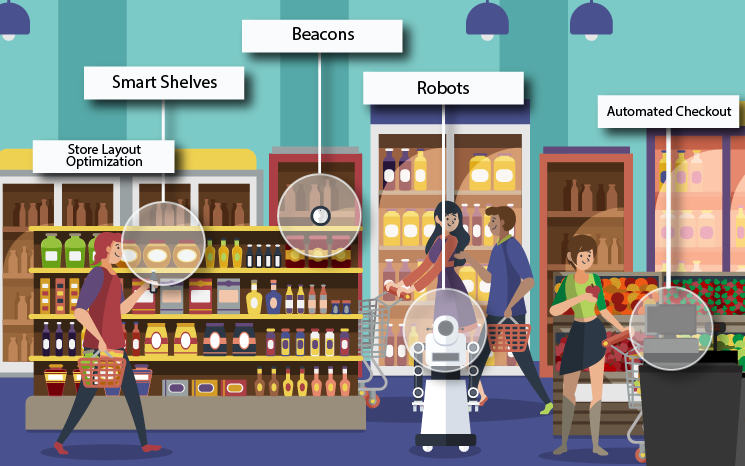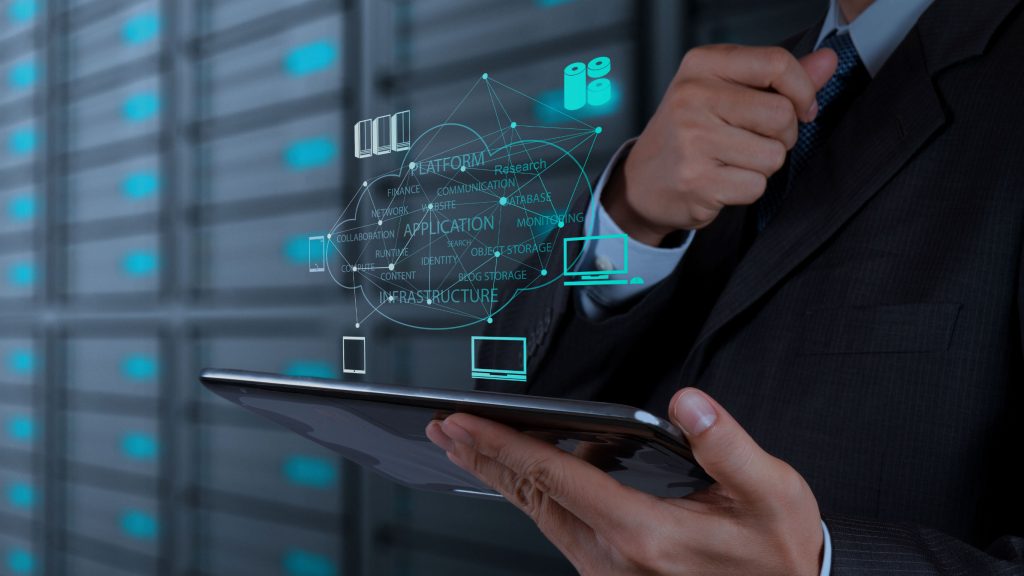
IoT in Retail – Use Cases, Challenges
By Udit Agarwal

In the rapidly evolving retail landscape, the Internet of Things (IoT) is revolutionizing how consumers shop and businesses operate. By connecting physical objects to the digital world, IoT technology enables retailers to enhance customer experiences, optimize operations, and drive business growth. In this article, we’ll explore the diverse use cases of IoT in retail and discuss the challenges associated with its implementation.
Enhancing Customer Experience:
One of the primary use cases of IoT in retail is enhancing the in-store and online customer experience. IoT-enabled devices such as smart shelves, beacons, and interactive displays provide personalized recommendations, product information, and promotions to shoppers based on their preferences and location. By leveraging data analytics and machine learning algorithms, retailers can deliver targeted marketing messages and offers that resonate with individual customers, driving engagement and loyalty.
Furthermore, IoT devices facilitate seamless checkout experiences through contactless payment systems, self-service kiosks, and mobile apps. By reducing wait times and friction at the point of sale, retailers can improve customer satisfaction and increase sales conversion rates.
Optimizing Inventory Management:
IoT technology is crucial in optimizing retailers’ inventory management and supply chain operations. RFID tags, sensors, and connected devices track the movement, location, and status of products in real-time throughout the supply chain. Retailers can minimize stockouts, reduce overstocking, and improve inventory turnover rates by monitoring inventory levels, expiration dates, and demand patterns.
Moreover, IoT-enabled innovative shelving systems automatically detect product depletion and trigger replenishment orders, ensuring shelves are always stocked with the right products at the right time. This proactive approach to inventory management helps retailers maximize sales opportunities while minimizing carrying costs and excess inventory.
Improving Operational Efficiency:
IoT solutions offer retailers valuable insights into store operations, customer behavior, and employee performance. By deploying connected cameras, sensors, and devices, retailers can monitor foot traffic, dwell times, and queue lengths in real-time. This data enables retailers to optimize store layouts, staffing levels, and promotional strategies to enhance operational efficiency and profitability.
Furthermore, IoT devices automate routine tasks such as temperature monitoring, energy management, and equipment maintenance, reducing labor costs and minimizing downtime. Predictive analytics algorithms analyze historical data and predict future trends, enabling retailers to make data-driven decisions and adapt quickly to changing market conditions.

Challenges of Implementing IoT in Retail:
While the potential benefits of IoT in retail are substantial, several challenges must be addressed for successful implementation:
- Data Security and Privacy: IoT devices generate vast amounts of sensitive data, including customer preferences, purchasing behavior, and payment information. Retailers must prioritize data security measures such as encryption, authentication. And access controls to protect against cyber threats and unauthorized access.
- Interoperability and Integration: Retailers often operate complex IT ecosystems comprising multiple systems, platforms, and technologies. Ensuring seamless interoperability and integration between IoT devices, legacy systems, and third-party applications is essential to avoid compatibility issues and maximize the value of IoT investments.
- Cost and ROI: The upfront costs of deploying IoT solutions, including hardware, software, and infrastructure, can be significant for retailers and tiny and medium-sized businesses. Retailers must carefully evaluate the total cost of ownership and potential return on investment (ROI) to justify investment in IoT projects and ensure long-term sustainability.
- Change Management: Implementing IoT technologies requires significant organizational change and cultural shifts within retail organizations. Retailers must invest in employee training, stakeholder engagement, and change management initiatives. To ensure successful adoption and maximize the benefits of IoT deployments.
Conclusion:
IoT technology is promising to transform the retail industry by enhancing customer experiences, optimizing operations, and driving business growth. IoT solutions offer retailers unprecedented opportunities to innovate and differentiate in an increasingly competitive market. From personalized marketing and inventory management to operational efficiency and data-driven decision-making.
While the challenges of implementing IoT in retail are significant, they can be overcome through strategic planning, investment in technology infrastructure, and collaboration with experienced partners and vendors. By proactively embracing IoT and addressing these challenges. Thus, retailers can unlock new levels of agility, efficiency, and profitability in the digital age.